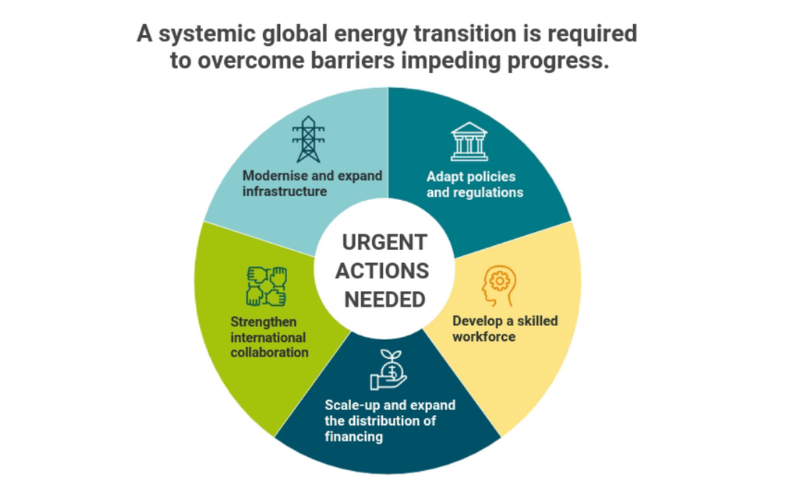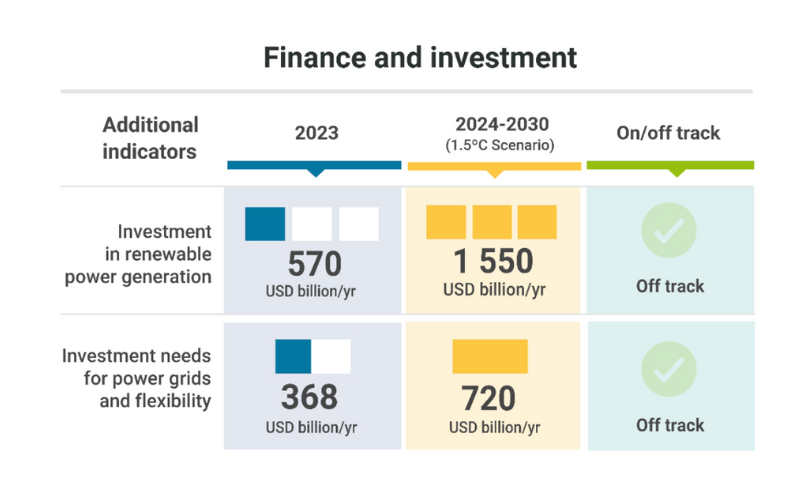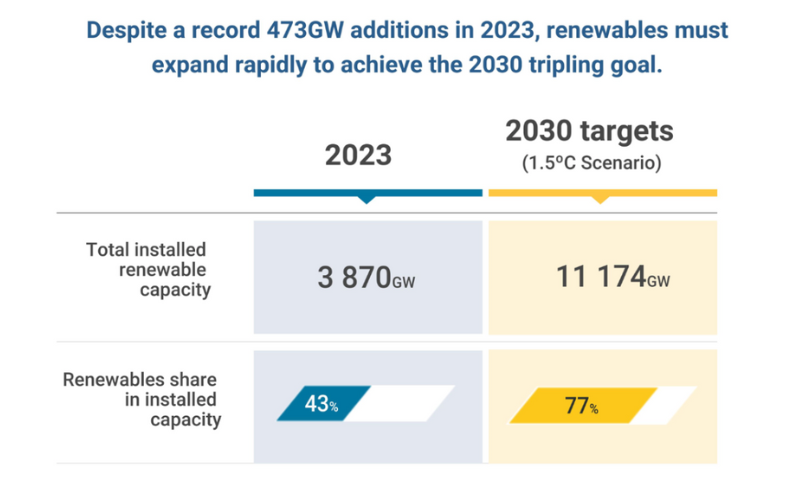The International Renewable Energy Agency (IRENA) has published its latest report called the Tracking COP28 Outcomes
The creation of favourable conditions for such expansion is critical to meeting the global goal of tripling the capacity of renewable energy sources by 2030, as agreed upon at COP28. It is technically and financially possible to triple the capacity of renewable energy sources by 2030, but doing this will need tenacity, widespread investment, and regulatory backing.
IRENA reports that 2023 will go down as the year with the most renewable energy deployments ever, adding 473 GW to the world's energy mix. The International Renewable Energy Agency (IRENA) brief, however, comes to the conclusion that removing structural and systemic obstacles to the energy transition is necessary to triple renewable power capacity.

Image credit: IRENA
“An average of almost 1,100 GW of renewables capacity must be installed annually by 2030 - more than double the record set in 2023. Annual investments in renewable power generation must surge from US$570bn in 2023 to US$1550bn on average between 2024 and 2030,” IRENA said in a statement.
Need for more renewables in the grid
Francesco La Camera, director-general of IRENA, said, “In the wake of the historic UAE Consensus on tripling renewables at COP28, these capacity additions—despite setting a new record—clearly indicate that achieving the target is far from guaranteed. As the custodian agency, IRENA monitors related progress across key indicators every year. Our data confirms that progress continues to fall short, and the energy transition remains off track. We urgently need a systemic shift away from fossil fuels to course-correct and keep the tripling goal within reach."
It seems unlikely that the tripling objective would be met because, by 2030, an extra 7.2 TW of renewable energy will need to be installed in order to attain the necessary 11 TW. But without immediate governmental action, current predictions suggest the aim will remain unattainable. For example, the G20 countries have to increase their renewable capacity from less than 3 TW in 2022 to 9.4 TW by 2030, which is more than 80% of the total worldwide.

Image credit: IRENA
It is essential to accelerate investments in system operations and infrastructure (such as power grids and storage), revise policies and regulations (such as power market design and streamlined permitting), strengthen supply chains and develop necessary skills, and significantly increase investment levels—including public funds made possible by international cooperation.
You might like: Technical Review Middle East's COP28 coverage
More investments needed
Investment levels in developing nations have been disproportionately low. Even while investments related to the energy transition hit a new high in 2023—exceeding US$2 trillion—just over half of all worldwide investments were made in emerging markets and developing economies. Just 15% of worldwide renewable investment went to 120 poor countries; less than 1.5% went to Sub-Saharan Africa, despite the region having the largest percentage of people without access to energy.
On the other hand, subsidies for fossil fuels totaled US$1.3 trillion in 2022, which is the same amount of money that must be invested annually in renewable energy sources in order to triple their capacity by 2030. One of the main tenets of IRENA's 1.5°C Scenario is that using more renewable energy must be accompanied with a reduction in the use of fossil fuels. Both are falling behind.
In stark contrast to the promise made at COP28 to move away from fossil fuels, G20 nations alone spent a record US$1.4 trillion in public funding in 2022 to support fossil energy.

Image credit: IRENA
In order to maintain the triple pledge and guarantee financial flows to the Global South, increased international collaboration will be necessary. Sub-Saharan African nations have some of the highest financing costs in the world, which emphasises the need for more international cooperation. This cooperation should include multilateral development banks' involvement and public finance's expanded role.
It is critical to employ public funds strategically in order to draw large amounts of investment and implement an inclusive energy transition that benefits everyone's socio economic situation. This calls for institutional changes to properly support developing nations' energy transition, notably within international financial frameworks.




